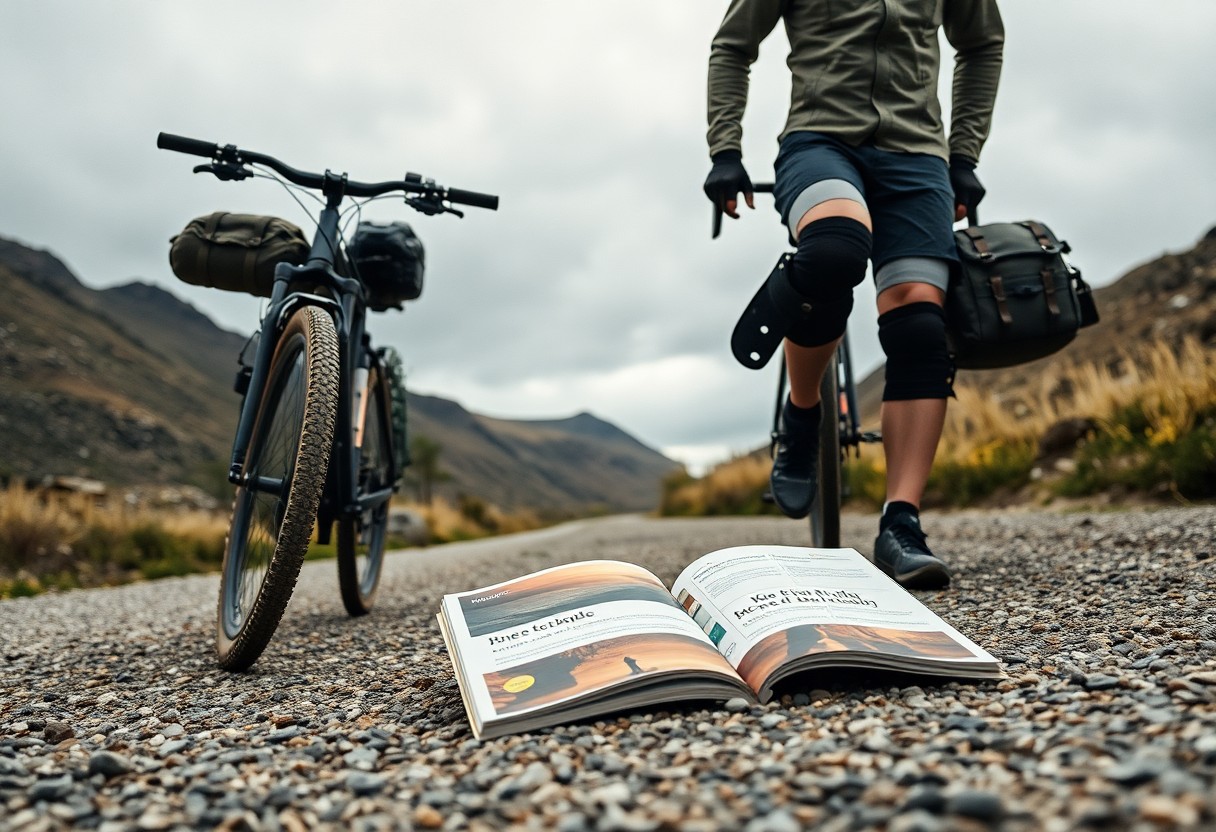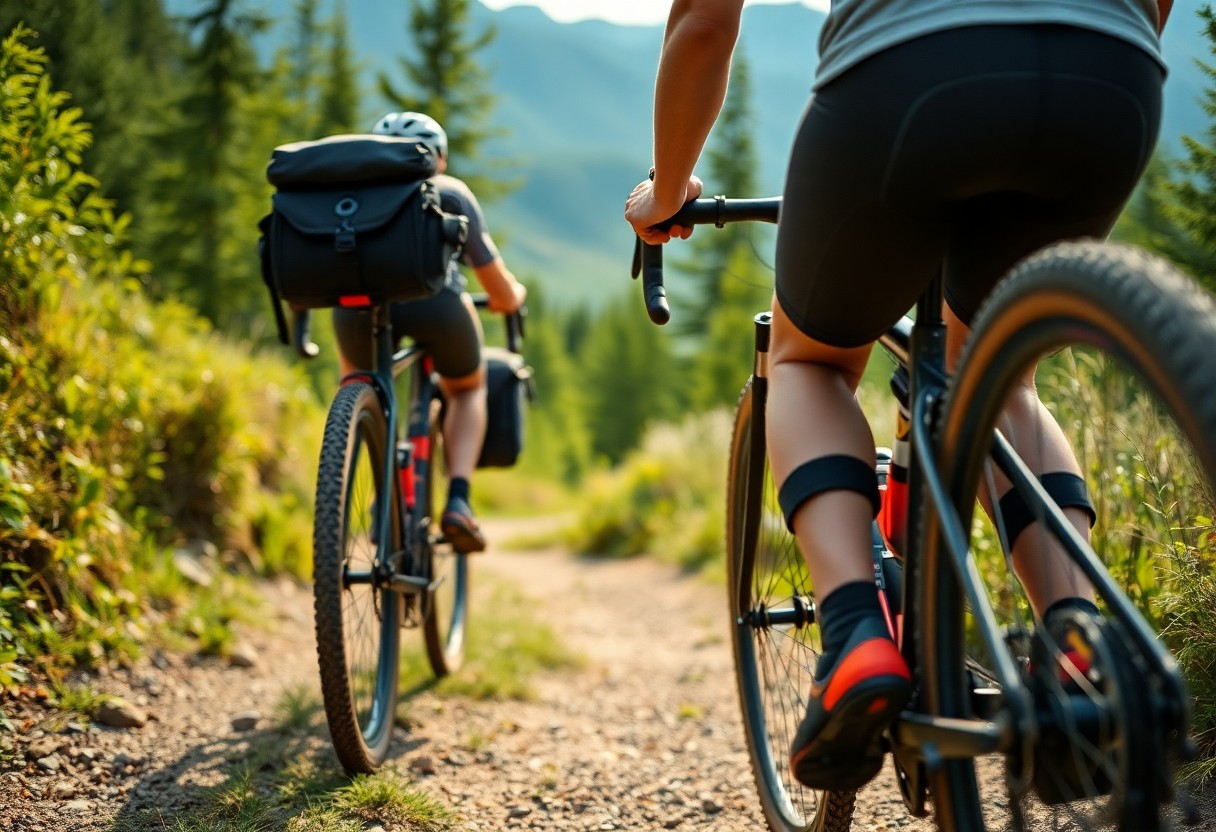Over the years, many bikepackers have faced the challenge of bad knees, which can significantly hinder your adventures. As you explore the trails, understanding how to manage your knee health is necessary for a pleasurable experience. This post will provide you with practical tips and insights on the best practices and gear that can help alleviate discomfort and ensure that your journeys remain enjoyable and safe. Your knees are vital, and taking care of them will enhance your bikepacking adventures.

Navigating the Terrain: Understanding Knee Health
Understanding the intricacies of knee health is fundamental for bikepackers keen on maintaining their mobility and enjoyment on long rides. Your knees bear the brunt of the repetitive pedalling motion, which can lead to various problems if not properly managed. Addressing factors such as bike fit, riding technique, and terrain type is important to prevent escalation of discomfort into more serious conditions. By recognising the signs of wear and tear, you can adapt your approach to ensure your bikepacking adventures are sustainable and enjoyable.
The Anatomy of Knee Pain in Cyclists
Knee pain in cyclists often stems from the unique biomechanics associated with cycling. In your case, the pain might arise from overuse or improper alignment during pedalling, which places excessive strain on specific parts of the knee joint. Anatomically, the areas of concern include the patella, ligaments, and tendons that facilitate movement. Understanding how each component functions during cycling can equip you with the knowledge to address pain effectively.
Common Injuries and Their Causes
Several common injuries plague cyclists, including patellar tendinopathy, iliotibial band syndrome, and meniscus tears. Generally, these injuries occur due to a combination of factors such as poor bike fit, incorrect saddle height, and overtraining. If you experience persistent discomfort, it may signal an underlying issue that warrants careful evaluation.
For instance, patellar tendinopathy, often referred to as “jumper’s knee,” typically results from excessive strain on the patellar tendon during the pedalling motion. On the other hand, iliotibial band syndrome often arises from friction as the IT band rubs against the knee, usually exacerbated by improper bike set-up. Increasing your mileage too quickly without adequate rest can also lead to cumulative trauma. Recognising these ailments early can help you manage them effectively, ensuring that your bikepacking experience remains a positive one.
Bike Modifications for Pain-Free Rides
Making specific bike modifications can significantly enhance your comfort while riding, reducing the risk of pain exacerbation. Tailoring your bike to suit your body and riding style helps align your posture and stabilise your movements, creating a more enjoyable experience. Simple adjustments, such as optimising seat height and adapting pedal systems, play a pivotal role in ensuring your knees remain pain-free during long adventures.
The Role of Frame Geometry and Sizing
Frame geometry and sizing directly impact your riding position, aiding in smoother pedal strokes and decreasing strain on your knees. A well-fitted frame allows proper leg extension, reducing undue pressure on your joints. Opting for a bike with the right top tube length and seat tube angle can drastically change your comfort level by promoting an efficient pedal technique.
Adjusting Components: Seat Height and Pedal System
Fine-tuning your seat height and pedal system can dramatically alleviate knee pain. Correct seat height allows for optimal leg extension at the bottom of each pedal stroke, while an appropriate pedal system provides better energy transfer and reduces joint strain. Achieving this balance is imperative for a comfortable ride, especially on long trips.
To adjust your seat height, start by setting it so that your leg is almost fully extended when the pedal is at its lowest point, with a slight bend in the knee. This position ensures that your knees are not overextended, reducing the risk of injury. Additionally, consider your pedal system. Clipless pedals offer greater efficiency and control, which is vital for maintaining a stable riding position. Experimenting with different pedal systems, such as flat or clipless, can further optimise your comfort and performance, enabling pain-free adventures on the bike.
Gear That Protects: Choosing the Right Equipment
Selecting the appropriate gear can make a substantial difference in managing knee discomfort while bikepacking. Focus on optimising your bike fit, including saddle height adjustments, to achieve a natural leg extension. Additionally, investing in quality equipment designed to reduce strain on your knees, like ergonomic grips and adjustable handlebars, can enhance your riding experience. Keep in mind, comfort starts with a bike that supports your body properly and caters to your unique riding style.
Impact of Shoes and Pedals on Knee Comfort
Your choice of shoes and pedals directly affects knee health during rides. Proper cycling shoes should offer a stable platform and superior support, while clipless pedals allow for a more efficient transfer of power. Mismatched combinations can lead to poor alignment, resulting in increased strain on your knees. Look for shoes that provide excellent arch support and minimal flex, as these attributes promote a healthier riding position.
Essential Accessories: Bracing and Compression
Incorporating bracing and compression accessories can dramatically alleviate knee pain while bikepacking. Knee braces offer support to stabilise your joints, and compression garments enhance blood flow, reducing inflammation during lengthy rides. These items are particularly beneficial for individuals with existing knee issues as they can prevent further injury while providing much-needed support.
Compression sleeves, for example, not only reduce swelling but also improve muscle efficiency, allowing for a more enjoyable riding experience. Many riders report a significant decrease in discomfort after adopting knee braces during longer trips. In terms of specific options, consider custom-fit braces for maximum benefit or compression shorts that encompass the knee joint for added support. Tailoring your gear with these accessories equips you for the rigours of bikepacking while actively protecting your knees.
Training Techniques to Strengthen and Prevent Injury
Incorporating targeted training techniques into your routine can significantly improve your knee strength and overall biking experience. Focus on low-impact exercises that enhance muscle endurance while mitigating the risk of injury. You might integrate activities such as cycling on a stationary bike or using resistance bands to condition the important stabilising muscles around your knees. Additionally, engaging in activities that promote joint flexibility and strengthening your core can help maintain balance and ease the load on your knees during rides.
Building Muscle Stability for Better Support
Building muscle stability around your knees enhances support during rides, reducing the strain on your joints. Exercises like squats, lunges, and step-ups target the quadriceps, hamstrings, and calves, collectively reinforcing your knee stability. Aim for two to three sets of 10-15 repetitions for each exercise, gradually increasing the resistance as you progress. Over time, this muscle strengthening will create a protective mechanism for your knees, making long rides more enjoyable.
Effective Stretching and Warm-Up Routines
A well-structured warm-up routine and effective stretching are vital in preparing your body for bikepacking. Before hitting the road, dedicate at least 10 minutes to dynamic stretches targeting your legs, hips, and lower back. Exercises like leg swings, walking lunges, and high knees improve blood flow and flexibility, thus enhancing overall performance. Implementing this routine consistently can lead to a reduction in muscle tightness and lower the risk of injury, keeping your knees happy on every adventure.
To maximise the benefits of your stretching and warm-up routine, consider incorporating yoga or Pilates sessions into your weekly schedule. These practices not only improve flexibility but also build core strength, which is necessary for maintaining proper posture on the bike. Focus on poses like the downward dog, pigeon pose, and warrior stretches to relieve tension and enhance mobility. By prioritising this preparatory work, you’ll set yourself up for a more enjoyable and pain-free ride, allowing you to fully embrace your bikepacking adventures.
Listener’s Voice: Real Experiences and Solutions
Your fellow bikepackers have shared a wealth of experiences and solutions that shed light on managing knee issues while still enjoying the open road. Tales of frustration mixed with ingenuity reveal that, while challenges abound, creative problem-solving can keep your adventures alive. From customised gear to strategic route planning, these insights demonstrate that you’re not alone in facing discomfort. The community has rallied together, offering practical advice and personal stories that resonate with many who have had to adapt their biking habits.
Insights from Seasoned Bikepackers with Knee Issues
Those who’ve faced knee challenges provide compelling insights into their journeys. Many advocate for adopting a lower gear ratio, which lowers the force exerted on your knees during climbs. Regular stretching routines, especially targeting the hamstrings and quadriceps, are frequently mentioned as effective for alleviating pain. Some experienced bikepackers also recommend utilising supportive, ergonomic saddles to enhance comfort and minimise stress on the knees during long rides.
Community Recommendations and Best Practices
You’ll find that the bikepacking community thrives on sharing recommendations that can make a significant difference in managing knee discomfort. Strategically using a combination of gear modifications, such as clipless pedals and knee braces, combined with tailored training regimens, can set you up for success. Additionally, exploring multi-day trips with easy terrain allows ample time for your knees to recover while still enjoying the adventure.
As you engage with fellow bikepackers, you’ll uncover a treasure trove of community-driven practices. Many suggest gradually increasing your mileage to avoid overexertion, which can contribute to knee pain. Specific online forums and local cycling groups are fantastic resources for discovering tried-and-tested routes that minimise steep gradients and offer ample flat stretches. Regular strength training, particularly for your core and legs, has been praised for its positive impact on overall bikepacking endurance and knee resilience, helping to build the muscles that support your joints on those longer rides.
Final Words
So, if you’re facing challenges with bikepacking due to bad knees, focus on pacing yourself, choosing the right terrain, and maintaining proper bike fit. Incorporating strength training and flexibility exercises into your routine can greatly enhance your riding experience. Utilising supportive gear, such as knee braces or proper footwear, can also provide you with the added stability you need. By carefully considering these factors, you can continue to enjoy your bikepacking adventures while minimising discomfort and preserving your knee health.
